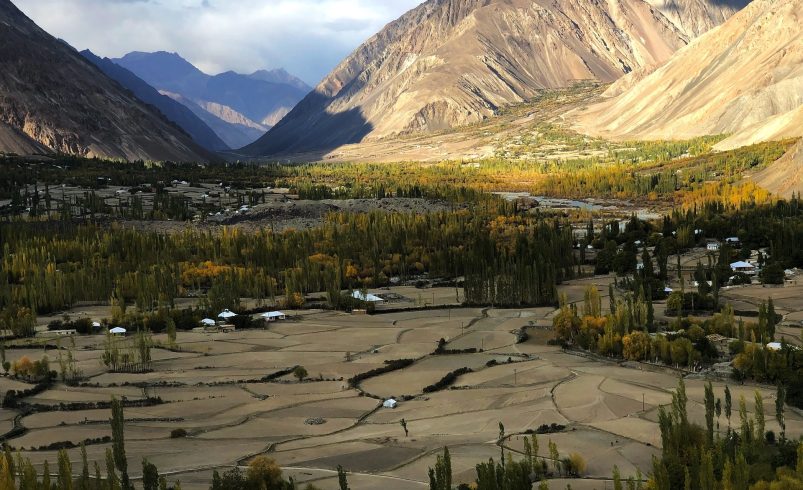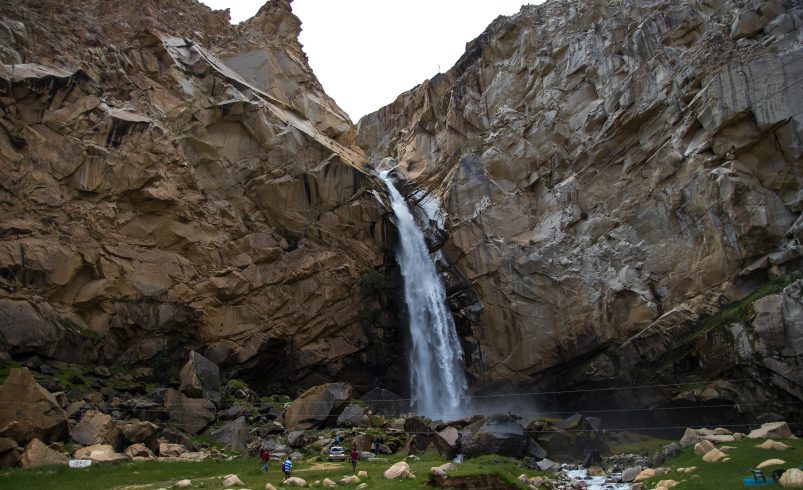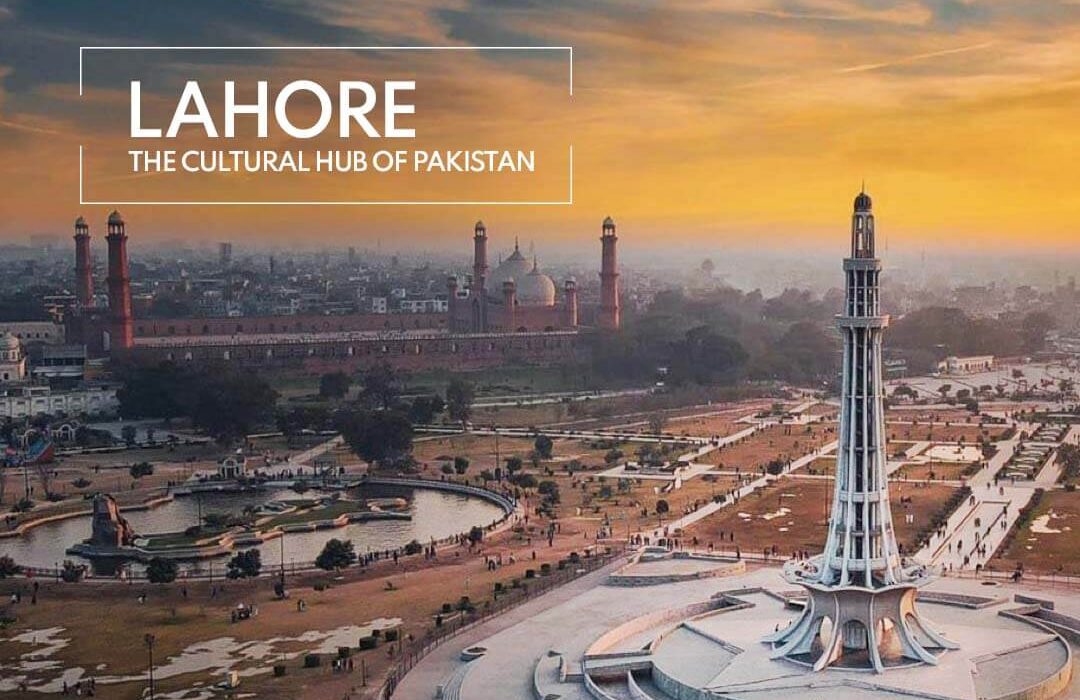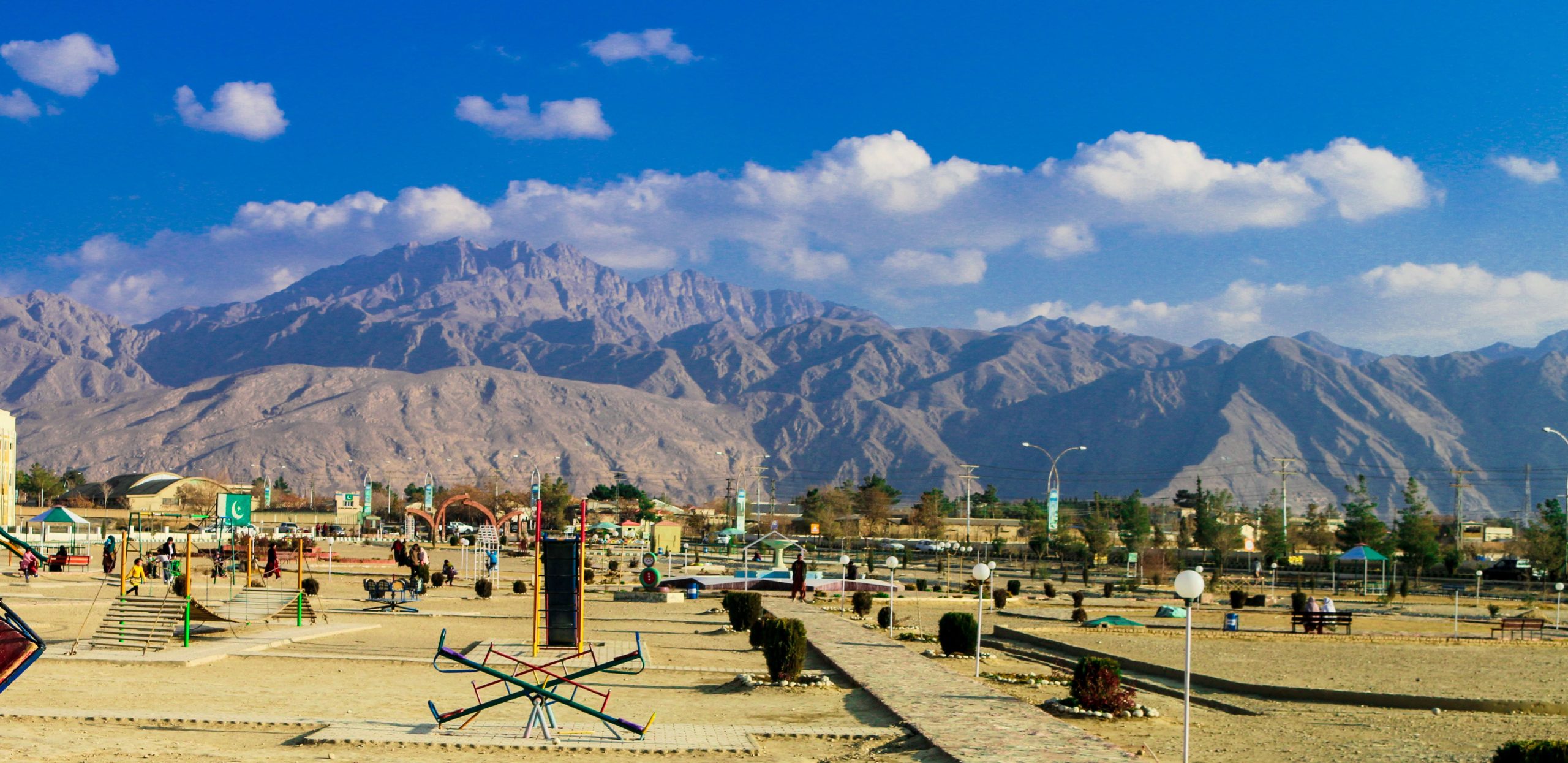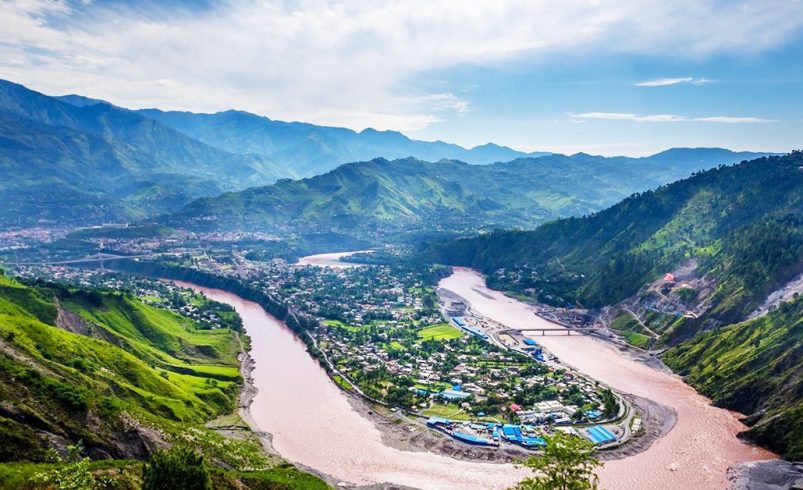
- November 24, 2024
Introduction
Muzaffarabad is the serene capital of Azad Jammu & Kashmir, Pakistan, offering a perfect blend of lush green landscapes, historical landmarks, and vibrant culture. Located at the confluence of the Neelum and Jhelum rivers, Muzaffarabad serves as a gateway to one of the most picturesque regions in Pakistan. With majestic mountains, beautiful valleys, and a rich history, it’s no surprise that Muzaffarabad is a must-visit destination for tourists looking to explore the unexplored beauty of Pakistan.
In this Muzaffarabad travel guide, we will walk you through the history, cultural heritage, attractions, travel tips, and much more to make your trip unforgettable.
History
Muzaffarabad has a deep historical background, dating back to the Mughal era. The city was founded in 1646 by Sultan Muzaffar Khan, who established it as a military outpost. Over time, Muzaffarabad grew into a thriving center for trade, culture, and administration. Its strategic location at the junction of the Neelum and Jhelum Rivers made it an ideal position for trade routes linking Kashmir and the rest of Pakistan.
Throughout its history, Muzaffarabad has witnessed various rulers, including the Mughals and the Dogras, leaving behind traces of their influence on the architecture and culture of the region. Today, the city stands as a testimony to this rich past, offering tourists a chance to explore its historic forts, palaces, and cultural remnants.
Cultural Heritage
Muzaffarabad’s cultural heritage is a beautiful fusion of Kashmiri and Punjabi traditions, making it a culturally diverse and vibrant place. The city’s cuisine, clothing, music, and festivals reflect its deep-rooted traditions. The locals are known for their warmth and hospitality, making visitors feel at home.
The city is also home to traditional Kashmiri handicrafts, including Pashmina shawls, Kashmiri carpets, and woodwork, which are highly sought after by collectors worldwide. If you’re keen on exploring the local culture, a visit to the local markets and shops will immerse you in the heart of Muzaffarabad’s cultural life.
Best Time to Visit
The best time to visit Muzaffarabad depends on the kind of experience you’re seeking.
- Spring (March to May): The weather is mild, making it the perfect time for sightseeing and outdoor activities.
- Summer (June to August): It’s the peak tourist season when the weather is warm, ideal for trekking and exploring the valleys.
- Autumn (September to November): The weather is cool and pleasant, and the foliage is at its peak, providing stunning views of the valleys.
- Winter (December to February): For those seeking snow, winter brings snowfall to the region, offering a completely different landscape.
Location
Muzaffarabad is located in the northern part of Azad Jammu & Kashmir, at the confluence of the Neelum and Jhelum Rivers. It is surrounded by breathtaking mountains and lush valleys, including Neelum Valley, Ratti Gali Lake, and Leepa Valley. Its proximity to the Indian-administered Kashmir makes it a significant area for exploring both natural and cultural aspects of this disputed region.
How to Reach
Muzaffarabad is easily accessible from Islamabad, the capital city of Pakistan. Here are the primary ways to get there:
- By Road: The most common way to reach Muzaffarabad from Islamabad is by road. The distance is approximately 140 kilometers, and the journey takes around 3 to 4 hours via Murree Road or Mansehra Road.
- By Air: The nearest airport to Muzaffarabad is the Muzaffarabad Airport (located 7 km outside the city), though flights are limited. Visitors typically fly to Islamabad International Airport and take a bus or drive to Muzaffarabad.
Key Attractions in Muzaffarabad
Muzaffarabad is blessed with a rich history and breathtaking natural beauty. Below is a detailed list of its key attractions:
1. Pir Chinasi
- Overview: Pir Chinasi is a popular hill station and a spiritual destination located at an elevation of 2,900 meters. It is named after a famous Sufi saint, Pir Chinasi, whose shrine is situated at the top of the mountain.
- Key Features: The place is known for its panoramic views of the surrounding mountains, valleys, and the city of Muzaffarabad. The climate is cool and refreshing, making it a perfect getaway during the summer months.
- Things to Do: Visit the shrine of Pir Chinasi and enjoy a peaceful walk through the lush green forests. The hilltop offers spectacular views of Neelum Valley and Jhelum River, making it a photographer’s paradise. Hiking and picnicking are popular activities here.
2. Red Fort (Chak Fort)
- Overview: Chak Fort, also known as the Red Fort, is a historical site built by Sultan Muzaffar Khan in the 17th century. The fort is situated on the banks of the Jhelum River, offering panoramic views of the river and the surrounding valley.
- Key Features: Although much of the fort is in ruins, the remains of its red sandstone walls and towers are still visible. The fort once served as a military stronghold and is a significant historical landmark in the region.
- Things to Do: Explore the fort ruins and walk through its corridors. The scenic views of the Jhelum River and surrounding areas make it an ideal spot for photography. You can also take a peaceful walk along the riverbank.
3. Neelum Valley Viewpoint
- Overview: The Neelum Valley Viewpoint is one of the most breathtaking spots in Muzaffarabad. Located on a hilltop, the viewpoint offers a stunning panoramic view of the entire Neelum Valley, famous for its lush greenery, waterfalls, and snow-capped peaks.
- Key Features: The viewpoint offers a sweeping view of the Neelum River flowing through the valley, surrounded by towering mountains. The viewpoint is ideal for nature lovers and photographers.
- Things to Do: Visit the viewpoint to witness the stunning views of the valley. It’s a great spot for landscape photography and spending quiet time amidst nature.
4. Shaheed Gali
- Overview: Shaheed Gali is a small town located a short distance from Muzaffarabad. It is famous for its scenic beauty and its association with the region’s tumultuous history during the Kashmir conflict.
- Key Features: Shaheed Gali is surrounded by thick forests and lush greenery, offering a serene atmosphere. The area is historically significant as it was once a battleground.
- Things to Do: Explore the scenic landscapes and enjoy nature walks. The place is also perfect for photography, especially of the dense forests and serene surroundings.
5. Subri Lake (Langarpura Lake)
- Overview: Subri Lake, also known as Langarpura Lake, is a picturesque freshwater lake located near Muzaffarabad. The lake is surrounded by lush greenery and is often visited by nature lovers and trekkers.
- Key Features: The lake’s crystal-clear waters are surrounded by dense forests, creating a serene atmosphere. The tranquility of the place makes it an ideal spot for relaxation and nature walks.
- Things to Do: Enjoy boating or take a peaceful stroll along the shores of the lake. The area is also ideal for camping and picnicking amidst nature.
6. Sathra Viewpoint
- Overview: The Sathra Viewpoint is located on the road between Muzaffarabad and Neelum Valley. This viewpoint provides a stunning vista of the surrounding valleys, rivers, and mountains.
- Key Features: The viewpoint is perched on a high elevation, offering breathtaking views of the region’s landscape. Visitors can also enjoy the cool breeze and lush greenery.
- Things to Do: Stop at the viewpoint during your journey from Muzaffarabad to Neelum Valley. The spot is perfect for landscape photography and for taking in the beauty of the surroundings.
7. Lohar Gali
- Overview: Lohar Gali is a hill station located near Muzaffarabad, known for its cool weather and lush green surroundings. It is a great place to visit during the summer to escape the heat of the plains.
- Key Features: The town is surrounded by dense forests and offers panoramic views of the surrounding mountains and valleys. It is an ideal spot for nature lovers and those looking for a quiet retreat.
- Things to Do: Enjoy nature walks, hiking, or simply relax amidst the cool, refreshing environment. Lohar Gali is also an excellent spot for picnicking with family and friends.
8. Patika
- Overview: Patika is a small village located in the mountains near Muzaffarabad. The village is known for its rustic charm, peaceful atmosphere, and picturesque surroundings.
- Key Features: The area is surrounded by lush green forests, terraced fields, and traditional mud houses. The village offers a glimpse into the rural life of the region and is an ideal place for a peaceful getaway.
- Things to Do: Explore the village and its surroundings, taking in the natural beauty. You can also enjoy nature walks, photography, and interacting with the friendly locals to learn about their culture.
9. Leepa Valley
- Overview: Leepa Valley is a remote and beautiful valley located around 100 km from Muzaffarabad. The valley is famous for its pristine environment, snow-capped peaks, and the scenic Leepa Pass.
- Key Features: The valley is surrounded by majestic mountains and covered with thick forests. Leepa Valley remains snow-covered for most of the year, making it an attractive destination for winter tourism.
- Things to Do: Trek through the valley and enjoy snow sports in the winter. Leepa Valley is also ideal for trekking, camping, and photography.
10. Machiara National Park
- Overview: Machiara National Park is a protected wildlife reserve located in the upper reaches of the Neelum Valley, around 50 km from Muzaffarabad. The park is home to diverse flora and fauna, including species such as leopards, bears, and musk deer.
- Key Features: The park is known for its rich biodiversity, lush forests, and pristine natural beauty. Visitors can witness a variety of wildlife and enjoy the serene environment of the park.
- Things to Do: Go wildlife spotting, bird watching, or take a nature walk through the park’s vast forests. The park is also a great place for camping and trekking.
Nearby Places to Explore
- Neelum Valley: A must-visit for nature lovers, filled with waterfalls, lakes, and serene landscapes.
- Leepa Valley: Known for its snow-capped mountains and traditional villages.
- Sharda: A scenic spot with historical ruins, offering stunning views and trekking opportunities.
- Toli Pir: A hill station offering panoramic views of the region and a popular hiking spot.
Where to Stay in Muzaffarabad
There are various accommodation options in Muzaffarabad, ranging from budget hotels to luxury resorts:
- Mir Continental Hotel: A luxury option offering modern amenities.
- Neelum View Motel: A mid-range option with scenic views.
- Local Guesthouses: For a more authentic and budget-friendly experience, consider staying in a guesthouse run by locals.
Emergency Contacts & Health Precautions
- Emergency Services: Dial 1122 for ambulance or police assistance.
- Local Hospital: District Headquarter Hospital Muzaffarabad
- Health Precautions: Be mindful of altitude sickness if visiting high-altitude areas like Pir Chinasi or Ratti Gali Lake. Carry essential medicines, and drink only bottled water.
Travel Tips for Muzaffarabad
- Always carry a local map or use a GPS-enabled phone for navigation.
- Pack light, breathable clothing during summer, and warm clothes during winter.
- Carry sunscreen and a hat, especially if trekking in the open.
- Respect local customs and be mindful of the conservative nature of the region.
FAQs
1. What is the best time to visit Muzaffarabad?
The best time to visit Muzaffarabad is during the spring (March to May) and autumn (September to November) months. During this time, the weather is pleasant, and the landscape is lush and green. Summer months (June to August) can also be ideal for travelers looking to escape the intense heat of other regions. However, if you enjoy snowfall and winter sports, the winter season (December to February) offers a magical snow-covered landscape in the surrounding areas like Pir Chinasi and Leepa Valley.
2. How can I reach Muzaffarabad from Islamabad?
Getting to Muzaffarabad from Islamabad is relatively easy. You can take a public bus or hire a private car. The road distance is around 135 km, and the journey usually takes about 3 to 4 hours. The route is picturesque, passing through mountainous terrains, valleys, and rivers. Alternatively, you can also take a local flight to Islamabad and then proceed to Muzaffarabad by road.
3. Is Muzaffarabad safe for tourists?
Yes, Muzaffarabad is generally considered safe for tourists. The locals are welcoming, and the area sees a significant number of national and international visitors each year. However, it is always advisable to check for any travel advisories before planning your trip. Also, make sure to take standard precautions related to health, safety, and local customs while traveling.
4. What are the key attractions in Muzaffarabad?
Some of the most popular key attractions in Muzaffarabad include Pir Chinasi, Red Fort (Chak Fort), Neelum Valley Viewpoint, and Shaheed Gali. Each of these destinations offers a unique experience, ranging from historical landmarks to stunning natural beauty. The surrounding mountains, valleys, and lakes also provide amazing spots for trekking, hiking, and photography.
5. What activities can I do in Muzaffarabad?
In Muzaffarabad, you can indulge in a variety of activities like trekking, boating, photography, and camping. The surrounding valleys, especially Neelum Valley and Leepa Valley, offer trekking routes for adventurers. Boating in Subri Lake and Leepa Valley is another serene experience. Additionally, nature walks, wildlife spotting, and visiting the various historic forts like Red Fort are also highly recommended.
6. Where should I stay in Muzaffarabad?
There are several accommodation options in Muzaffarabad to suit different budgets. For luxury travelers, there are upscale hotels and resorts offering beautiful views of the surrounding mountains. If you prefer a more rustic experience, you can opt for guest houses or local inns. For nature enthusiasts, camping at places like Pir Chinasi or Leepa Valley could also be an adventurous option.
7. What are some nearby places to visit from Muzaffarabad?
Several amazing destinations are located near Muzaffarabad, making it a perfect base for exploring. Notable nearby attractions include Neelum Valley, Leepa Valley, Pir Chinasi, and the Machiara National Park. Rawalakot, a hill station located around 80 km away, is also a great destination for day trips.
8. Can I enjoy snowfall in Muzaffarabad?
Yes, Muzaffarabad and its surrounding regions like Pir Chinasi and Leepa Valley receive snowfall in the winter months (December to February). These areas become winter wonderlands, attracting tourists who want to experience the beauty of snow-capped mountains, frozen lakes, and participate in snow sports like skiing and snowboarding.
9. What is the local cuisine in Muzaffarabad?
The local cuisine in Muzaffarabad is rich and flavorful, with a variety of traditional Kashmiri dishes. Some popular dishes to try include Rogan Josh, Dum Aloo, Chapli Kebab, and Kahwa (a traditional Kashmiri tea). Additionally, naan and rice are commonly served with meat dishes. Don’t forget to try some delicious local sweets like Gulab Jamun and Saffron-based desserts.
10. Are there any health precautions to take while visiting Muzaffarabad?
While Muzaffarabad is generally safe for travel, it is important to take some health precautions. Ensure that you are vaccinated for common diseases and carry a basic first aid kit. The area is located at a higher altitude, so if you’re visiting hill stations like Pir Chinasi, be prepared for mild altitude sickness. Carry bottled water, as the water quality in some remote areas may not be reliable. Also, carry any medications you may need, especially if you have pre-existing conditions.
11. Is there any public transport available in Muzaffarabad?
Yes, Muzaffarabad has a network of public transport options, including buses and shared taxis. These are affordable ways to explore the city and nearby areas. However, if you prefer more flexibility and comfort, you can hire a private car or tourist taxi for your trips to local attractions.
12. Can I visit Muzaffarabad year-round?
Yes, Muzaffarabad can be visited year-round, with each season offering a unique experience. The spring and autumn months are perfect for enjoying pleasant weather and outdoor activities. Winter offers a snowy landscape ideal for snow sports, while summer is great for exploring the lush green valleys and forests in the region.
Conclusion
In summary, Muzaffarabad is a captivating destination with something for everyone—whether you’re seeking adventure, relaxation, or cultural exploration. From its stunning natural beauty, including Pir Chinasi, Neelum Valley, and Leepa Valley, to its historical landmarks like Red Fort, Muzaffarabad promises an unforgettable experience for all visitors. Be sure to plan your trip according to the season and enjoy the rich culture, cuisine, and scenic beauty this gem in Azad Kashmir has to offer.


